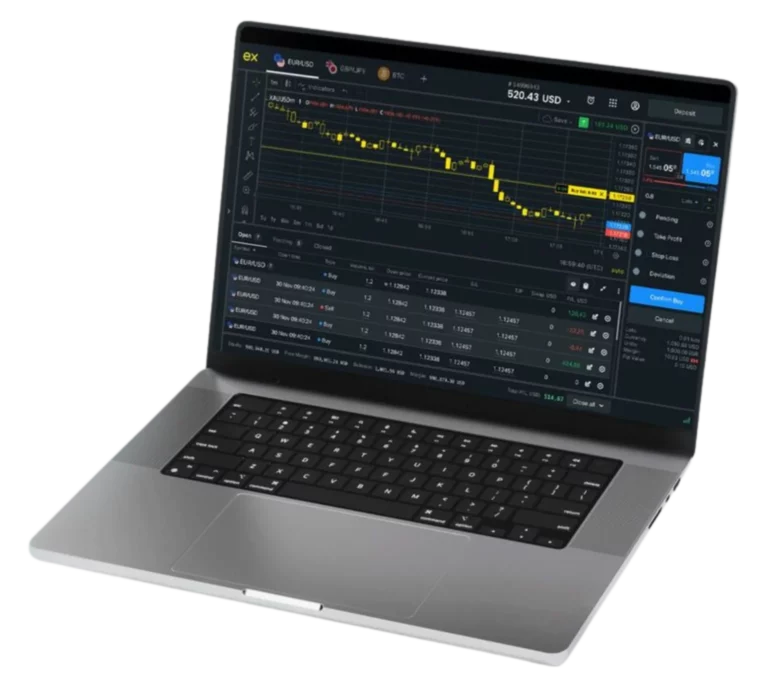Comprehending Trading Risks
CFD trading exposes traders to a myriad of risks, many of which are particular to leveraged financial instruments. Understanding the nature of these risks and their potential effects on your financial activities and overall financial health is crucial.
Risks Associated with Leverage
Leverage is a defining feature of CFD trading, enabling traders to manage large positions with relatively minimal initial capital. However, this leverage can also significantly amplify potential losses, making even minor market shifts result in considerable financial impact, possibly even surpassing the initial investment. Implementing strong risk management strategies is critical to mitigate these substantial risks.
Counterparty Risks
In CFD trading, transactions occur over-the-counter (OTC) with the broker serving as the counterparty. This arrangement means that positions are not transferable to other entities, which exposes you to the risk of the broker’s credit failure. If the broker faces insolvency or fails to fulfill their financial obligations, it could result in the unexpected liquidation of your positions, potentially incurring losses.
Market-Related Risks
The pricing of CFDs is directly linked to their underlying assets, subject to fluctuations driven by various market factors and events that can substantially affect their valuation and liquidity:
- Volatility: Market conditions can change swiftly and unpredictably, heightening both the potential for profit and the risk of loss. Handling these volatile conditions carefully is essential as they can have significant financial repercussions quickly.
- Currency Risk: Trading CFDs in a different currency than your account’s base currency introduces a foreign exchange risk. Fluctuations in exchange rates can alter the actual profits or losses realized, independent of the underlying asset’s performance. It’s particularly crucial to manage this risk when dealing with multiple currencies.
- Liquidity Risk: The risk of liquidity arises when the underlying assets become difficult to trade or lack adequate market depth, possibly leading to broader bid-ask spreads and more costly transactions that could result in difficult-to-mitigate losses.
Technical and Operational Risks
Digital trading of CFDs carries its own set of technical and operational risks that must be diligently managed:
- Trading Platforms: The stability and functionality of broker-provided trading platforms are crucial for your trading activity. Any technical disruptions or security breaches can impact order execution and overall trading efficacy. Employing dependable technologies and ensuring a stable internet connection are imperative to reduce these risks.
- Communication Risks: Keeping communication channels with your broker current and functional is crucial. Outdated contact information or failed communication channels can lead to missed critical updates, impacting your trading decisions and outcomes.
- Force Majeure Events: Uncontrollable extreme events like natural disasters or geopolitical unrest can disrupt trading operations and lead to losses. It’s important to recognize that losses from such events may not be the responsibility of your broker.
Pricing and Execution Risks
The risks associated with the pricing and execution of CFD trades can significantly affect your trading results:
- Slippage: This occurs when the actual execution price of a trade differs from the expected price, commonly during high volatility or when liquidity is low. This can unexpectedly reduce profits or increase losses.
- Abnormal Market Conditions: During unusual market conditions, executing or closing positions might become challenging or impossible. This can result in stop-loss orders not executing at the anticipated price, thereby amplifying losses beyond expectations.
Legal and Regulatory Risks
Engaging in CFD trading also involves adherence to legal and regulatory frameworks, which vary by jurisdiction and must be complied with by traders.
Additional Considerations for Traders
Beyond the primary risks, several additional factors should be considered:
- Margin Requirements: Monitoring your account to ensure adequate funds for covering margin requirements is crucial. Failure to meet these requirements can lead to the forced closure of positions, incurring significant losses.
- Ownership: Trading CFDs does not grant ownership of the underlying assets. These financial instruments derive value from the assets’ price movements, and traders do not acquire any material rights to the assets.
- Tax Considerations: Tax implications of CFD trading vary by region and must be understood and adhered to by traders. Independent tax advice should be sought to ensure proper compliance and planning.
- Security Concerns: The online nature of CFD trading can expose traders to enhanced security risks, including potential fraud or cyber threats. Implementing robust cybersecurity measures is essential to safeguard personal and financial information.
Conclusion
While CFD trading offers opportunities for significant financial gains, it also carries a range of substantial risks. This disclosure outlines key risks including leverage, counterparty, market, technical, pricing, execution, and regulatory risks. Prospective traders should assess their financial situation, investment objectives, experience level, and risk tolerance before participating in CFD trading. Consulting with financial, legal, and tax professionals is recommended to gain a comprehensive understanding of these risks. Adhering to responsible trading practices and continuous education on market conditions and regulatory updates is essential for successfully navigating the complexities of CFD trading. Remember, it is crucial to only invest funds that you can afford to lose.

